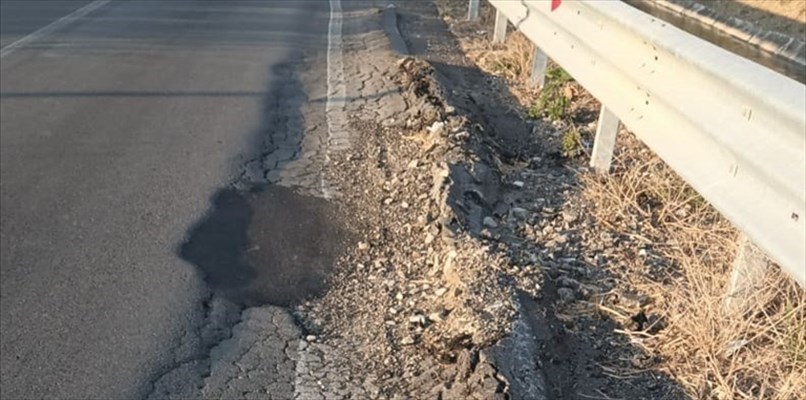unico patrimonio #3

TRAMONTI
"From spring onwards, nature lovers and lovers of silence come and go in order to find a place of the soul in the past."

Enclosed in a basin of the Lattari Mountains, along trails, only known by lovers of these unfamiliar routes, there is Tramonti, the place of an unknown village, far away from the Diva Costa and from the crowds, down below there is the winding road of Amalfi, the state road 163.
It admires the origin of its name of "terra tra i monti,” its presence is part of the thirteen districts, with thirteen churches and thirteen bell towers, as many as there are towns on the Amalfi Coast. Ancient villages are gathered in a circle around the basin as if they were the table that was prepared for the 13 guests of the Last Supper, or the round table of unblemished knights. Its inhabitants certainly enjoy the title of "Noble Men" given to them by the King of Naples Ferrante I of Aragon in 1460 when he had found refuge there and was generously welcomed after the military was defeated greatly by the Barons in the plain of Sarno.
This place in the mountains surely seems to be a site dedicated to retreats, meditation, silence, hiding, and defense. It was probably these characteristics along with the richness of the woods and waters that lead to its first settlements. With all of this silence, the presence of holy Italo-Greek monks was inevitable. In Gete they had built their fortress of faith, far away from the roads pounded by the armies, far from any contact with the men of the valleys, closer to heaven than to earth. "A small altar with a fresco of Our Lady - writes Adriano Caffaro - reminds us of the solitary monks.”
This mountain valley can be reached from Maiori or Ravello, but undoubtedly the most scenic itinerary is the one that, after the steep climb of the Nocerina plain, descends 650 metres from the Valico di Chiunzi, that is guarded by the ancient tower, built by Raimondo Orsini, the prince of Salerno. After passing the bastion, you enter the solemn silence of the chestnut groves, following a road with little twists that goes downhill. A few bends, then, after the bridge of the Vallone di Landrone, in front of you there is a beautiful view of the valley, where the north wind and the red roofs bring a note of liveliness to the widespread of greenery.
Travelling through this country of long shadows is like weaving a cross stitch on an imaginary frame, like the one on which women once prepared for their daughters' wedding trousseau on winter evenings, while men were working at connecting points and at the chestnut trees to form baskets, sports bags, spaselle and a thousand other forms. On the cliffs of this dispersed village ripen the last grapes of Autumn, tasty and juicy, big and appealing like love and from these Native wines are made, like Tintore, which leaves on the chalices the black traces of its passage.
At sunset the chimes of the Vespero talk to each other from the thirteen bell towers, as if to repeat an ancient prayer of the knights marked with the pointed cross of the nearby Amalfi.
The presence of the rocks that make up the bell towers indicates a rocky origin; the frescoes of the religious interiors link to ancient spirituality.
Here is S. Elia, with its four-story bell tower and the church of the Ascension, deconsecrated for a long time: a popular legend tells that it was banned after the killing of the parish priest while mass was being celebrated.
Going further is Cesarano, a village once inhabited by men who knew how to weave twigs and chestnut leaves wisely, forming baskets for work and objects for the house. Pucara conserves a beautiful canvas from the school of Luca Giordano, and for the less impressionable, they can see the ancient seats where the dead were put to “drain.” In the church of S. Francesco in Polvica two precious sarcophagi are preserved, while in Gete, there is the rock settlement of San Michele which is of great interest historically and culturally. Finally, once long ago in Figline, there was the last basket maker, a man who on cold evenings cooked chestnut twigs, slatted them, and then wove them into a thousand fantasies, while drinking a glass of wine with a bite of sheep's milk ricotta.
In Campinola, there are just a few houses and an open field. From the mother church the renovated organ, from the ‘700, are sent the tunes of prestigious concerts; just beyond Enza Telese, Antonio and Giancarlo De Marco take care of their invented "Secret Garden of the Soul,” a hymn to nature, a triumph of plants and flowers, from the trees of life to the pergolas of wisteria and the rooms of roses with hundreds of varieties from the queen of flowers. From spring onwards, nature lovers and lovers of silence come and go in order to find a place of the soul in the past.
Included in the list of the Association of "Authentic Villages of Italy,” is Tramonti, the home to the most famous pizza makers in the world. A product of the hardships and imagination, pizza has become a delicious dish, tasty, known as a fall in gluttony, which has entered into history, customs, and the folklore of the people, thanks to the pizza makers of Tramontani, who did not lack the knowledge of the "court of rules,” the only guarantee of an authentic and genuine product.
Monks and hermits had left these mountains long ago, but today the generous people remain, rich in spontaneity like mountain men. People who perhaps were not expected to be found in this hidden area of the Divine Coast, just like sunsets shouldn’t be seen there, an unknown place, which entrusts the individuality of its name to the thirteen towns protected by green chestnut trees.
It is precisely the chestnut groves from which spring cuspidated bell towers give the image of Tramonti, a village that had proposed the name "tramontana" to Flavio Gioia, while he was praying on the wind rose and the magnetic needle, for the wind that descended from the mountains.
On these lands where sudden changes in time were marked by the crowing of the rooster, by the howling of dogs on the threshing floor, by the bellowing of cows in the stables, people still celebrate the ancient rituals of the curved work of cultivating the land or milking the animals for the white and tasty dairy products. "...I saw the sky, the donkey and the man bowing down to lay down the stingy earthen millstone, to numb the wind,” wrote Alfonso Gatto. It is the daily miracle of the hands.













